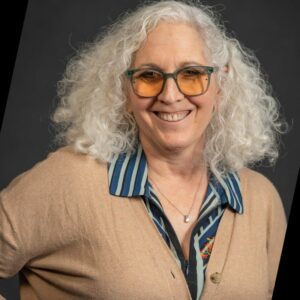 During a Zoom meeting, I heard a familiar lament from a bright, successful counseling colleague who was running on fumes, exhausted because her students just weren’t coming through with the essays she thought they were capable of.
During a Zoom meeting, I heard a familiar lament from a bright, successful counseling colleague who was running on fumes, exhausted because her students just weren’t coming through with the essays she thought they were capable of.
I love brainstorming, she said. I love getting to know my students, but the essays they write seem so flat.
I listened. I wondered why she was connecting flat essays with brainstorming.
The counselor explained that she looks forward to reflecting with her students after they’ve completed extensive brainstorming exercises that ask them to dig deep into their values, priorities, interests, and passions.
Next, with all of this material in hand, she sits down for one or more hour-long brainstorming sessions, where she and the student explore potential topics. They choose something meaningful, and then she sends them home to write a draft.
And that’s where the trouble starts. These essays rarely reflect the depth of their discussion.
Maybe if I ask different questions, I’ll get better essays, she said. Can you give me a better brainstorming exercise?
Sorry, but no, I responded.
Thinking students will go home to write the essays she envisions based on their engaging discussion is a mistake. It’s a common mistake, too. We talked about that.
Truth be told, this counselor does not have a brainstorming problem; it’s a process problem. And like so many of our professional colleagues do, this counselor was moving each student straight from a short discussion about values and passions to an essay draft with nothing in between.
This is both ineffective and inefficient for pros and students.
At Wow, we assign pre-work exercises that must be completed and returned on time, according to a schedule with deadlines that we provide before every brainstorm appointment. There are 4 pre-work steps for every essay. We start with Step 1: Understand the Prompt, before moving on to Step 2, Brainstorm for ideas. This process is intentional and repeatable for every type of student.
Step 1 Goal: We make sure the student understands the purpose of the essay, can distinguish between accomplishments and traits/characteristics, and has begun to consider positive characteristics to share in the essay.
Step 2 Goal: Before we meet to brainstorm ideas, we ask students to come up with several ideas on their own. These ideas are conversation-starters, not a menu of choices. The coach and student will explore these ideas, and possibly others, during this 60-minute discussion.
We complete Step 3, Focus on Theme, together at the end of the brainstorm session; we always confirm that the student knows why they chose a particular topic. The idea is to help students leave the discussion with a theme for their essay, a theme that incorporates both what happened in the story (the anchor story) and why it matters (one or more positive characteristics).
Students will use their theme and the discussion as the basis for the writing exercises and reviews that come next.
Many of you have attended Wow webinars, educational sessions, read our blogs, and done our professional training. No matter what tools you use with students, or what you might be considering in the future, you can follow this advice, too. We can help.

Start by taking a close look at our ten steps in this colorful graphic. Focus on the top half of the chart, Steps 1-5. Make sure your students understand how the essay fits into the larger application package and why they’ve chosen a particular topic.
Then step back. You may be pleasantly surprised.
Improve Your Essay Coaching Practice
Whether you’re a brand new counselor or have decades of experience, essay coaching can be the hardest part of college counseling.
It doesn’t have to be that way. We’ve helped hundreds of professionals like you improve their college essay coaching practices. It all starts with the signature Wow training: the College Essay Experience.

If you haven’t done the Wow training, it’s time!
We’ll show you how you how to teach students to write strong, effective essays with less stress and greater confidence for you, your students and their parents.


